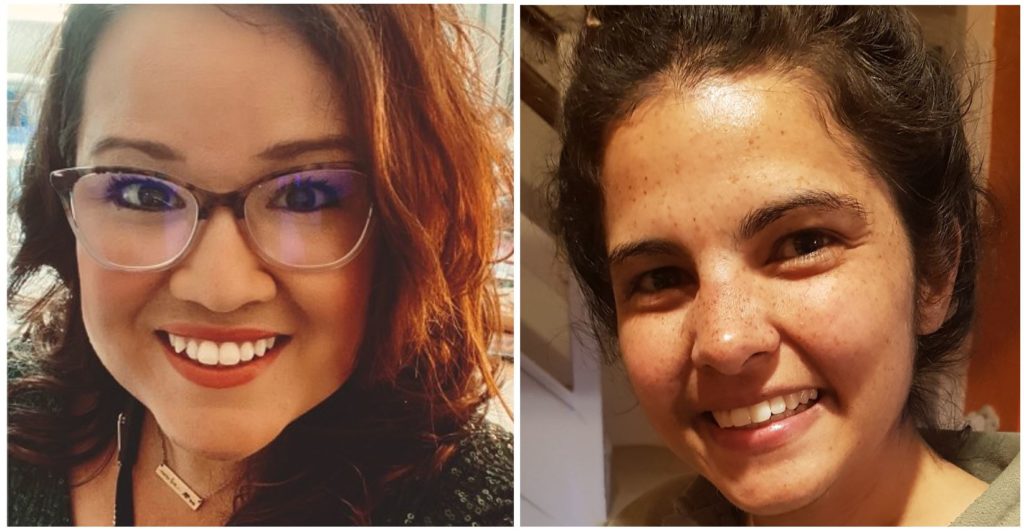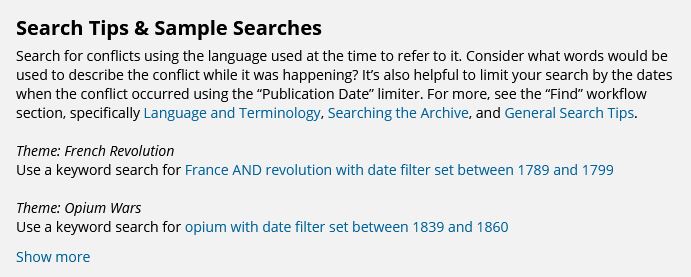| Originally published on The Gale Review |
Launching in a selection of Gale’s archives in autumn 2021, Gale Primary Sources Learning Centers will bring a new level of support for students and instructors looking to get the most out of using primary sources, both in their research and in the classroom. Shaped by feedback from Gale Primary Sources users, the Learning Centers are intuitive, all-in-one instructional resources that are designed to orient users with the content in our archives, spark inspiration for research and act as a best practice guide when it comes to skills like searching, citing and using primary sources. Tailored to each unique archive, they will include key topics, sample searches, case studies, and contextual materials.

With these Learning Centers, it was essential to apply best practices for teaching and learning. This allowed us to facilitate learning outcomes that took into account the unique archival attributes of each archive, while also scaffolding student learning in information literacy. With that in mind, our team of experts collaborated to design and develop a learning experience for users to achieve these objectives.
Developing the Framework
We first sought to understand what our users needed to best support their learning and research. We already knew what they wanted to be able to do, having gathered that information during our interviews with academics, but how could we implement their desires in the most effective way? In order to deliver the best solution for our users, we leveraged the knowledge of two experts that set the framework and tone for the work and ensured the Learning Centers represent best practices.
Enter our instructional designer, Dr. Lindsey Gervais. With a doctorate background and research recognition in the field of Cognition, Instruction, and Learning Technology, Lindsey works with Gale product teams to elevate the instructional framework of Gale’s resources. With learning outcomes in research instruction and digital literacies at the forefront of her own teaching accomplishments, she is transforming Gale products to reflect the learning objectives of the school and university instructors and learners in product learning experiences.
Our Content Researcher, Dr. Lucy Dow, also had a key role in developing the framework. An integral part of the Gale Primary Sources team, Lucy is a food historian whose specialism is eighteenth- and nineteenth-century British cookery books. She used her experience teaching university students to inform the fundamental framework of the Gale Primary Sources Learning Centers. Lindsey and Lucy worked closely to build a template that followed good instructional design principles, ensuring that our users would get the most out of the content we were creating. This included implementing analytical questions at both a novice and advanced level, framing them with Bloom’s Taxonomy to guide the learner through their research journey, adding instructional diagrams, and structuring effective sample searches that will help the learner access and connect with the material.
The Gale Primary Sources Learning Centers contain Hints and Tips for effective research within the archive, such as the information above which explains that researchers need to use contemporary terms when conducting archival research, and can also limit their search to specific date ranges.
Lindsey’s input has also played a key role in the shaping of the final platform, from the creation of our four key workflow steps based on the Association of College and Research Libraries (ACRL) and Society of American Archivists (SAA) Guidelines for Primary Source Literacy learning objectives to the use of color, call-out boxes, and diagrams. Everything has been carefully selected to create an intuitive and supportive learning environment for all users, from those who have never used a digital database before, to those who have been working with primary sources for their entire career.

Creating the Content
Once we’d established the right template for the Learning Centers, we began to work on the content itself: the Sample Topics and Searches, Case Studies, Search Tips and Overviews that make up the core of the Learning Centers. It was important to us that this content was closely aligned with the unique material in each archive, drawing out its nuances and most interesting features, and so we turned to the people closest to that material: our editors.
Our editorial staff is responsible for curating and developing Gale’s archives, working closely with source institutions to gather interesting and important primary sources from around the world. They are experts on the archives and the historical context they sit within, which made them the perfect authors for the Learning Centers!
Focusing on the archives that were their own areas of expertise, our team of eight editors spent months delving into the material in the archives to uncover the primary sources that lent themselves to instruction, before creating key research topics, finetuning sample searches, developing thoughtful and challenging research questions and producing case studies based on the learning framework that Lindsey and Lucy had previously helped create. They also provided an additional historical context where needed, using their detailed knowledge of each specific historical area to help students develop their own understanding of the material and guide them through the research process. The quality of the content contained in Gale’s Learning Centers is a testament to the time, skill, and dedication of our editors.

From top left to right: Rachel Holt, Acquisitions Editor – Rebecca Bowden, Associate Acquisitions Editor – Liping Yang, Publishing Manager Digital Archives and e-Reference – Clem Delany, Associate Acquisitions Editor – Phil Virta, Senior Acquisitions Editor.
A Team Effort
Thus, what you will see in the Gale Primary Sources Learning Centers when they launch at the end of October reflects the work of numerous people here at Gale, from our instructional designers to our knowledgeable editors, to the developers who built the platform itself. And everyone has the same goal: to support the teaching and learning needs of our users with learning outcomes, ensuring the development of twenty-first-century skills is prioritized.
If you enjoyed reading about the expertise of the team who contributed to Gale’s new Learning Centers you may like to read more about the Learning Centers, or Gale’s other exciting new technological developments:
- Coming Soon: Learning Centers for Gale Primary Sources
- User Feedback Directs Gale’s Product Development
- The Author Gender Limiter Tool Brings Exciting Potential to the Study of Women’s Authorship and Digital Humanities
- Using Hand Written Text Recognition technology to help examine villainy and justice in Victorian London
Banner image by Scott Graham on Unsplash.com, combined with workflow icons from Gale Primary Sources Learning Centers.
JmksportShops , Chaussures, sacs et vêtements , Livraison Gratuite | Giftofvision , Streetwear, Sneaker News and Release Dates


